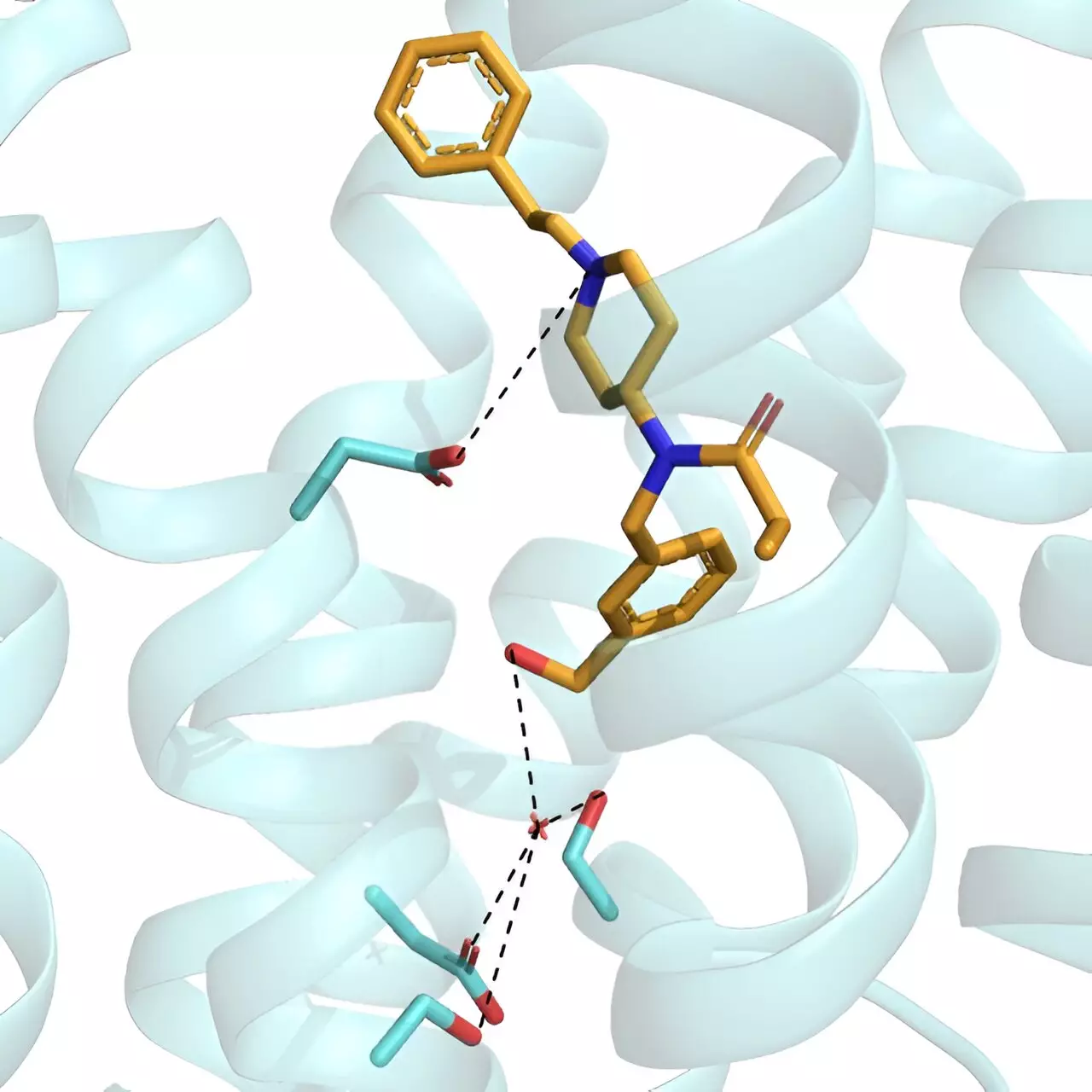Opioid medications have long been hailed as a necessary evil in the landscape of pain management. They provide critical relief for those grappling with debilitating conditions, allowing many to reclaim a semblance of normalcy in their lives. However, this relief comes at a steep price, as the risks associated with opioid usage are profound. The potential for addiction looms large, while withdrawal symptoms can plunge users into a harrowing experience marked by muscle pain and nausea. Even more alarming is the possibility of overdoses, often resulting from the drugs’ tendency to suppress breathing—a side effect that can swiftly turn fatal.
In attempting to reconcile the need for effective pain relief with the pressing need for safety, researchers have been fervently exploring ways to design opioids that minimize the dangers. The recent study published in ACS Central Science sheds light on an innovative approach that may pave the way for safer opioid alternatives, specifically the experimental compound RO76.
Rethinking Opioid Design
Traditionally, most efforts to create safer opioids have revolved around compounds that target the receptor’s active site. The unexplored territory of binding to unconventional sites is where the true potential for innovation lies. In earlier research, the molecule C6 guano revealed a fascinating new strategy; it managed to activate opioid receptors by binding outside the conventional active site. However, its inability to breach the blood-brain barrier highlighted a critical limitation in its practical application.
Enter a dedicated team of researchers including Susruta Majumdar and Jay McLaughlin, who recognized this gap and sought to develop a molecule that could retain the advantageous binding properties but also traverse the brain-protective barrier. Their systematic approach involved synthesizing and testing various compounds derived from existing opioids, ultimately pinpointing RO76 as a promising candidate. Its unique properties offer a revolutionary twist to the traditional opioid design, presenting a pathway to mitigate the detrimental side effects of existing medications.
RO76: A Beacon of Hope
The experimental findings surrounding RO76 are nothing short of remarkable. When tested on animal models, this compound displayed robust pain-suppressing capabilities that mirror those of morphine—long regarded as the gold standard. However, the distinction lies in its interaction with the opioid receptors. Unlike its predecessors, RO76 triggered a markedly different signaling response, implying that it may bypass some of the highly detrimental side effects that are typically associated with conventional opioids.
One of the most compelling aspects of RO76 is its reduced impact on respiratory function. It demonstrates a promising trend in slowing breathing less significantly compared to morphine, signaling a shift toward a safer option in opioid therapy. This aspect alone merits recognition; for too long, the medical community has had to navigate the perilous waters of opioid treatment with one eye on patient relief and the other on the potential for catastrophic failure.
Potential for Revolutionary Pain Relief
Moreover, the possibilities that RO76 presents are magnified by its oral administration potential. The research indicates that, when given by mouth, its pain-suppressing effects remain competitive with those achieved via injection. This is a game-changer, as oral medications often improve patient compliance and convenience while mitigating the risks associated with injectable delivery systems.
The researchers are not merely presenting RO76 as a theoretical improvement but as a real candidate for developmental pathways that could eventually lead to human clinical trials. The findings spark excitement in the realm of medical science, suggesting that a novel, safer generation of opioids may be on the horizon.
The strides made by researchers in designing safer opioids through the innovative development of compounds like RO76 represent a significant advancement in pain management. By shifting the paradigm of opioid design, we might finally move toward a future where patients can find relief without the overshadowing fear of addiction and overdose. The balance between effective pain relief and safety is delicate, but with advancements like RO76, there is hope for a more responsible approach to addressing chronic pain.


Leave a Reply